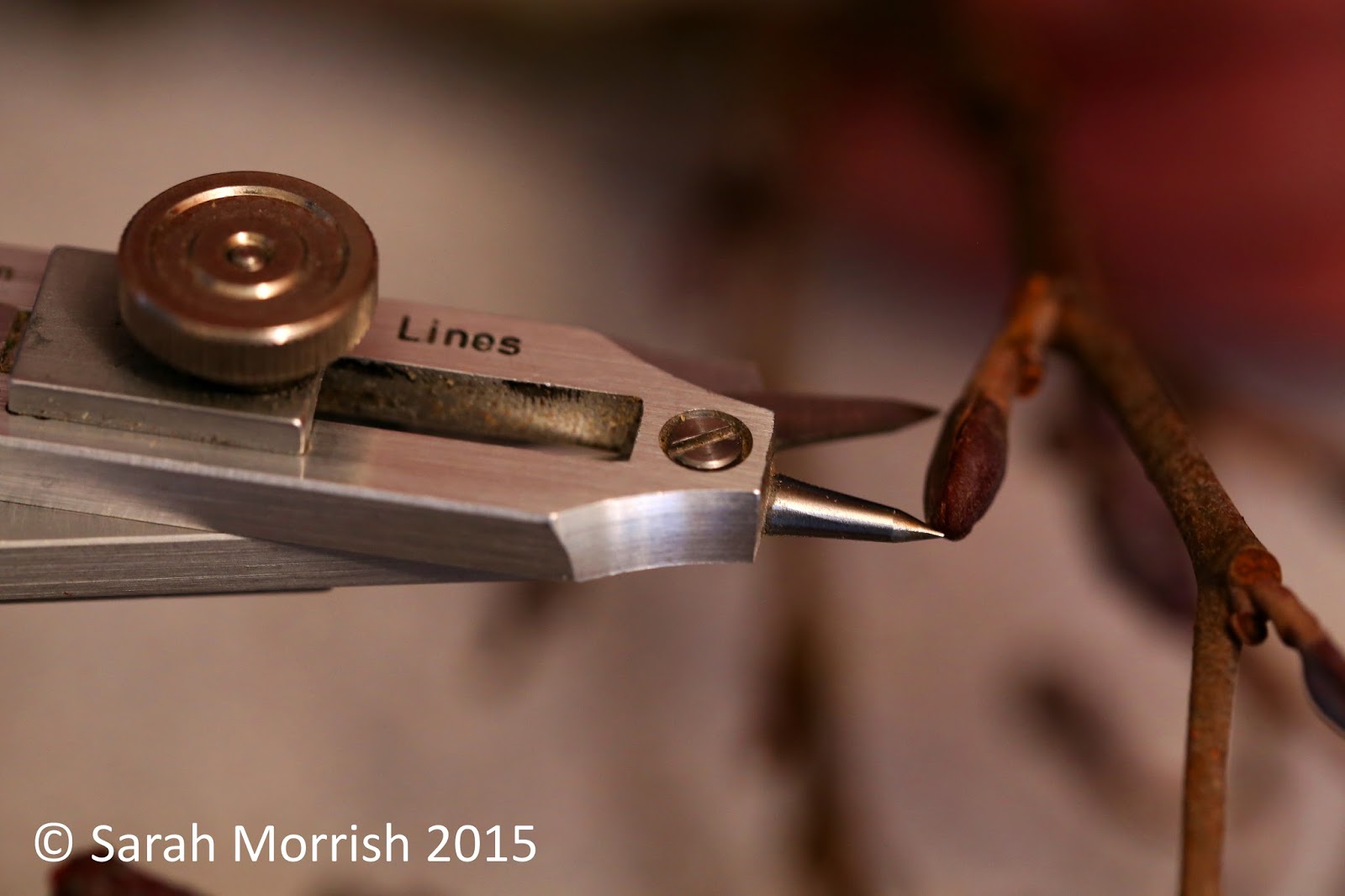This time, with the help of some amazing close-up photos I can show you 3 tree species and their winter twigs and buds in minute detail.
It may seem that trees are more difficult to identify in the winter months, but rest assured it can be an easier task than you think. If it is an isolated tree in the landscape you can quite often stand back and have a look at its overall shape, but if trees and shrubs are often bunched up together such as in a species rich hedgerow, it can be more difficult to tell.
The painting below is an old one called Twigs of Kingcombe Hedgerows. It is an old favourite and always raises much discussion about the variety of colours and textures, as well as beauty in winter twigs. It also shows that if you look carefully you can soon tell the differences and start to identify trees on your winter walks.
Can you tell what species they are ?
© Sarah Morrish. Twigs of Kingcombe Hedgerows
For my latest project I do really have to get up close and personal with winter twigs and the characteristics of each tree species. I need to know every single bit of detail, especially of the buds, as I am going to be producing enlarged paintings of the buds themselves. They are not going to be HUGE reproductions of the buds, but probably 5-10 times their actual size dependant on the tree and shrub species being studied. So, onto my research.
A photographer friend came for a visit with his super macro lens and carefully went to work in capturing so much detail. I could see the detail under microscope but I also needed digital images for reference too.
Here I am measuring the length of an Alder bud
An Alder bud up close
The female cones of Alder become darker and shed their seeds during winter
The male catkins of Alder, new this year, which will eventually turn more yellow and pendulous
The young twigs of Dogwood can appear slightly downy, although they are smooth to the touch.
As they age they become more shiny and redder.
I was amazed with what I saw through the microscope. Looking at them with the naked eye you just couldn't see the 'hairyness' of the young buds and bud scales.
The female flowers of Hazel emerging from their buds.
An enlarged version of the bud. Underneath my hand you can just see the scale bar of the actual size of this bud and flower. Here I am using a sable spotter brush
The edges of the bud scales often have a fringe of pale coloured hairs in places. Along with this the twigs can often be quite hairy.
The beauty of the male catkins of Hazel. They slowly open and release the pollen which then makes its way in the breeze to the female flowers
In this image you can clearly see the lenticels on the twig.
I hope you have enjoyed this close up view of winter twigs and their buds. This will be an ongoing project, so I am sure there will be plenty more blog posts showing further features of other tree and shrub species.
If you would like a further read of other news, my winter newsletter is now published. If you click on the link at the top of the right hand column, you can view and read a PDF of it.
There is also a link below that, that will take you to the page on the Natures Details website of the Summer School courses coming up in 2015.















Where did you buy that tool for measuring the length of an Alder bud and how do you call it?
ReplyDeleteHi Willy, it is a precise measuring tool called proportional or scale dividers. I will be talking about them in a later post hopefully.
DeleteThanks!
DeleteLots going on I see. Can't wait to see more of these lovely buds, twigs and catkins
ReplyDeleteThanks Jarnie, non-stop at the moment. Trying to catch as much information as I can before the buds burst forth !
DeleteFascinating project, Sarah
ReplyDelete